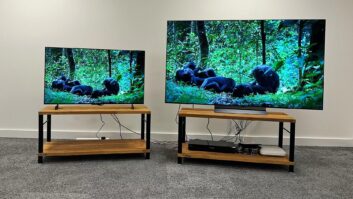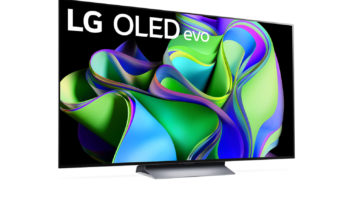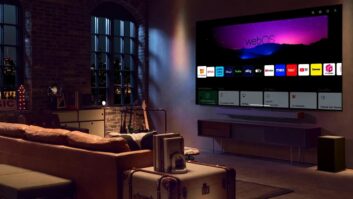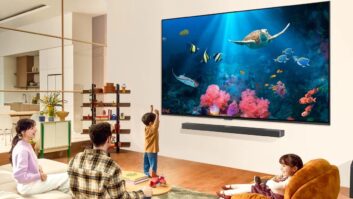After three years of waiting, Mobile Digital TV — offering free, live streaming digital TV to portables — came closer to reaching the market. An official standard for the technology was approved by the Advanced Television Systems Committee (ATSC).
In addition, LG Electronics assigned an early 2010 release date for one of the first products to use the standard — a portable DVD player/personal digital TV combo.
Mobile DTV uses the same digital spectrum as local TV stations for HD programming and allows the broadcast of the same programs to portable devices.
Broadcasters are already testing or airing the service in 29 markets, expected to grow to 70 by the end of the year, according to Anne Schelle, executive director of Open Mobile Video Coalition (OMVC), the trade group supporting Mobile DTV.
The OMVC held demonstrations of Mobile DTV in Washington for government officials in a bus traveling around the Capitol. LG demonstrated prototypes of GSM and CDMA handsets as well as its combo portable DVD/TV, it said, as seven Washington-area broadcasters transmitted Mobile DTV programming.
LG is also mass-producing semiconductor chips for use in LG and other products.
Other Mobile DTV products expected early in 2010 from various suppliers include PC dongles, smartphone accessories and possibly netbooks, said the OMVC. Later, handsets and in-car products will be offered.
Kenwood, which has demonstrated Mobile DTV tuners for the car in the past, said, “Our testing has shown that it works extremely well. We’ve been many, many miles from downtown Chicago and had signal,” said Mike Bergman, chairman of the special interest group for ATSC MH (now called Mobile DTV) for the Consumer Electronics Association. He is also Kenwood’s VP of new digital technologies. Bergman added that the technology also works well at very high speeds.
The ATSC Mobile DTV standard allows broadcasters to use a portion of the existing 19.3Mbps DTV channel capacity to transmit data with very robust characteristics suitable for mobile, pedestrian and handheld products, said LG.
In addition to live streaming simulcast TV under the new Mobile DTV standard, broadcasters can air additional programming on sub channels, such as HD2 and HD3, similar to multicasting in HD Radio, said Bergman. The new standard also includes technologies for interactivity and for subscription services, he added.
Mark Richer, president of ATSC, said, “To meet the technological challenges of sending digital television services to mobile and handheld devices within the existing DTV transmission was an impressive achievement made possible by industry cooperation.”













